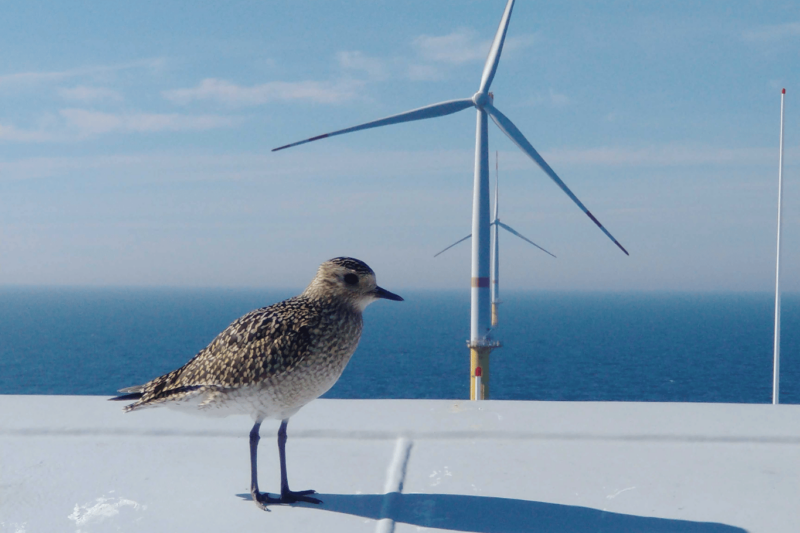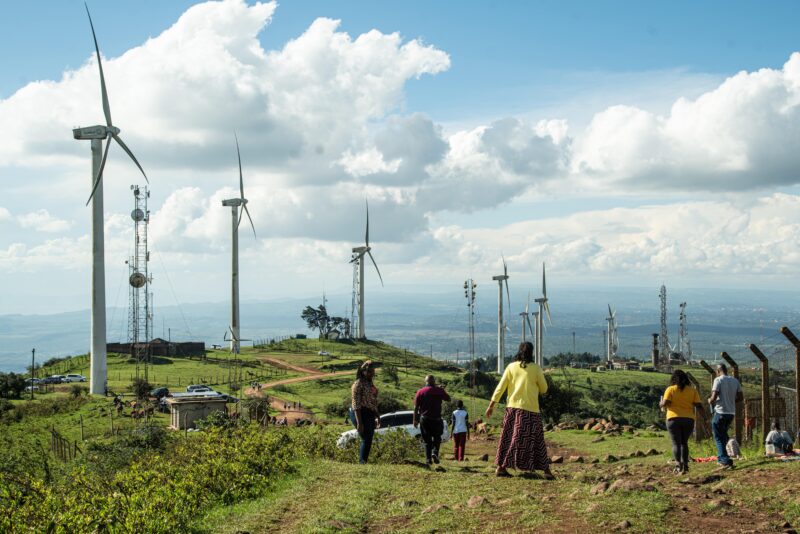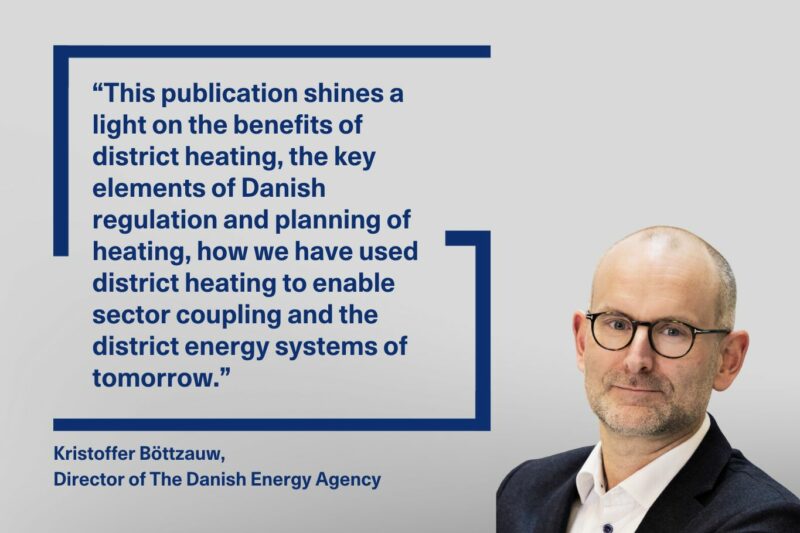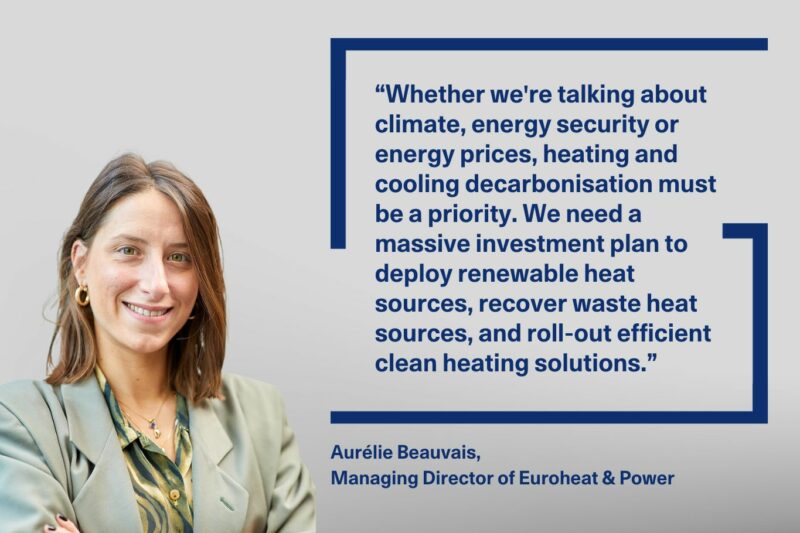News
District energy
District heating
Offshore wind
+1
Europe’s largest PtX facility to be built in Esbjerg, Denmark
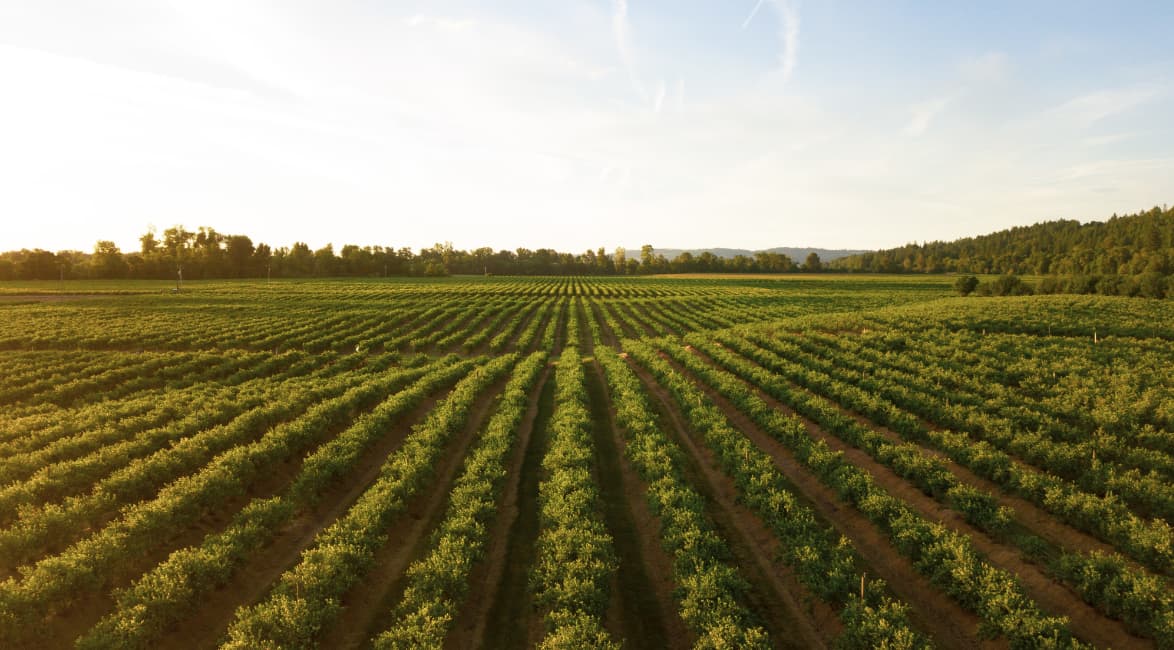

The Danish fund management company Copenhagen Infrastructure Partners (CIP) has unveiled plans for the establishment of Europe’s largest production facility of CO2-free green ammonia. The project will be located in the town of Esbjerg on the west coast of Denmark, where the Power-to-X-facility will turn power from offshore wind turbines into green ammonia.
The ammonia will be used by the agriculture sector as CO2-free green fertiliser and by the shipping industry as CO2-free green fuel. The excess heat will be used to provide heating for around one third of the local households in Esbjerg. The facility, which is expected to be built by 2026, will consist of 1GW electrolysis producing up to 900,000 tonnes of green ammonia annually. Ultimately, this is expected to reduce CO2-emissions by about 1.5 million tons CO2 yearly – the equivalent to removing 730,000 cars from the roads permanently.
-Related news: Danish partnership sets out to build world’s first commercial scale green ammonia plant
Agriculture and shipping industries on board
The announcement is made in collaboration with market leaders within the agriculture and shipping industries. Arla, Danish Crown and DLG are all part of the collaboration, and together they represent a significant part of the agricultural value chain: dairy, meat, and crops production. The project companies also include A. P. Moller – Maersk and DFDS, representing the shipping sector. Together with CIP, they have signed a memorandum of understanding, in which the signatories commit themselves to work towards realising the establishment of the facility.
"Solutions such as Power-to-X are key for the agriculture and shipping industries to take the next big leap within decarbonisation"
- Christian Skakkebæk, CIP
CIP, the world’s largest dedicated fund manager within greenfield renewable energy infrastructure investments, is looking forward to further collaboration with the companies, to bring the facility from the planning stage to the building stage:
“With this project, we support further development to cut CO2 emission from agriculture and shipping in Denmark, through the use of CO2-free green fertilisers and green fuel. The agriculture and shipping industries are industries, which are embarking on a journey of decarbonisation. Solutions such as Power-to-X are key for these industries to take the next big leap within the decarbonisation,“ said Christian Skakkebæk, Senior Partner in CIP, responsible for the Energy Transition Fund.
The project requires an investment of around EUR 1 billion, EnergyWatch.eu reports.
Part of CIP’s new Energy Transition Fund
Next generation renewable energy infrastructure assets, such as PtX, have become attractive as industrial scale investment opportunities. This has been driven by rapid technological advancements, significant cost reductions in renewable energy, and the global energy transition with an ambition to achieve net-zero companies and economies.
As market pioneer and global market leader in renewable infrastructure investments, CIP is uniquely positioned to capture this new market opportunity and has recently announced its new Energy Transition Fund to invest in PtX and other next generation renewable technologies. This enables investors to participate in the decarbonisation of sectors, such as agriculture and transportation, in addition to renewable electricity generation.
Among the potential investors in the project in Esbjerg and the new fund is PensionDanmark:
“Power-to-X is a new chapter in attractive green investment opportunities. We are excited about the opportunity to continue investing with CIP at the forefront of the energy market developments, beginning with the project in Esbjerg, and will present the opportunity to our Board next month,” said Torben Möger Pedersen, CEO PensionDanmark and chairman of the Danish Government’s Climate Partnership on Finance.
Power-to-X crucial for ensuring CO2-free agriculture sector
New solutions such as Power-to-X are necessary for the decarbonisation of the agriculture and shipping sector. A large portion of their sector cannot be electrified directly.
For the agriculture sector, fertilisers are necessary to continue to hold a high level of production. Ammonia production contributes to roughly 1.4 per cent of global CO2 emissions. The facility in Esbjerg has the capacity to replace all imported fertilisers in Denmark, which are produced from fossil fuels.
One of the potential direct buyers of the CO2-free green ammonia is DLG, the largest farm supply company in Europe.
“Power-to-ammonia gives us a future opportunity to supply our customers with CO2-free green fertiliser, which will be a sustainable tool in one of the first links of the value chain. Our customers and partners in the industry demand concrete solutions that can support them on their way towards a more sustainable agricultural production that has to be climate neutral in 2050, ” said Kristian Hundebøll, Group CEO of DLG.
Among the companies behind the memorandum of understanding is Danish Crown, Europe’s largest pork producer. They also see a vast potential in the facility:
“Danish Crown want to cut CO2 emissions by 50 per cent in 2030 and be carbon neutral in 2050. Decarbonisation of the agricultural sector is a difficult task, and we need to work on our entire value chain to achieve our target. The Power-to-X facility will bring an important contribution to our efforts: green fertiliser. By replacing chemical fertiliser with green fertiliser at the field, we can spare the atmosphere for 1.5 million tonnes of CO2,” said Jais Valeur, CEO of Danish Crown.
Alongside Danish Crown is Arla, Scandinavia’s largest producer of dairy products:
“This visionary project demonstrates how new technologies such as PtX can both play a major role in the decarbonisation of the agricultural sector, while adding knowledge and making significant climate contributions across sectors, industries and companies. Arla supports this project, as it could potentially be an important step in the green transformation of the entire agricultural sector and because the implementation of new technologies can contribute to Arla’s ambition to become CO2 neutral in 2050. Here, all initiatives that can lead in a more sustainable direction, are welcomed,” said Peter Giørtz-Carlsen, Executive Vice President & CCO from Arla.
Power-to-X is needed for a CO2-free shipping industry
Beyond that, the shipping industry also needs to have its current fossil fuels replaced with green alternatives. Two of the signatories are market leaders within the shipping industry. One of them is A.P. Moller – Maersk, a global, integrated container logistics company and operator of the world’s largest fleet of container vessels.
”There is a very real sense of urgency in curbing shipping’s emissions, and we must develop scalable carbon neutral fuels. Therefore, we welcome this project as an important development of green ammonia supply in the future. At A.P. Moller – Maersk we have announced that we will have our first carbon neutral vessel on the water by 2023 – seven years ahead of schedule. This vessel will be running on carbon neutral methanol. Nevertheless, we consider green ammonia as a promising option for marine fuels and a dual fuel engine for ammonia is under development. We are optimistic that ammonia, along with methanol and alcohol-lignin blends will be powering Maersk-vessels in the future,” said CEO of Fleet & Strategic Brands, A.P. Moller – Maersk, Henriette Hallberg Thygesen.
-Related news: Maersk sets net zero CO2 emissions target by 2050
DFDS, an international shipping and logistics company, among the largest in the North Sea-region, is the second shipping company, which is a signatory to the memorandum of understanding.
“Vessels are designed and built for today’s fueling and a green fossil alternative for vessels does not currently exist. That’s why we’re partnering in projects like Power-to-ammonia. The cooperation of fuel users and producers along with scientists and society is the fastest way to make sustainable fuels available as realistic alternatives to the fossil fuels we combust in our vehicles and vessels today. I hope that this partnership will help us reach our goal of operating zero-emission ferries and trucks much faster than without the partnership,” said Torben Carlsen, CEO of DFDS.
-Related news: Green ammonia could fuel a third of the global shipping fleet
Esbjerg expects a new Power-to-X era in the region
For the mayor of Esbjerg, Jesper Frost Rasmussen, it is only natural, that this facility is placed in Esbjerg:
”For the past ten years, we have been at the center of Europe’s and the world’s shipping of wind turbines. Now, we are embarking on a new era, in which Esbjerg will become the centre of green energy in the entire North Sea-region, which will strengthen Esbjerg’s position, where the energy transition has its highest priority. Our target is that Esbjerg is CO2-neutral in 2030 and this is an important step in the direction,” said Jesper Frost Rasmussen, mayor of Esbjerg.
-Related news: Danish partnership sets out to build world’s first commercial scale green ammonia plant
The mayor of Esbjerg also expects, that the whole region will benefit from this new facility. Being close to the many wind turbines on the west coast strengthens the opportunities in the future:
”With the current plans for expanding offshore wind, such as the Danish government’s plans for the world’s first energy island, we expect that this will bring growth and employment for our entire region – and it will place Denmark firmly on the global sustainability world map,” said mayor Jesper Frost Rasmussen.
Sources
Copenhagen Infrastructure Partners
Photo by Dan Meyers on Unsplash
